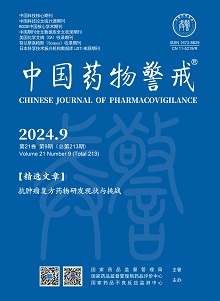|
|
Effect of Erzhu Tianma granules on model rats with prehypertension phlegm-dampness syndrome
ZHOU Simin, LIN Jianguo, WANG Qingqing, YAO Kuiwu
2024, 21(9):
998-1007.
DOI: 10.19803/j.1672-8629.20240291
Objective To investigate the effect of Erzhu Tianma granules (EZTM) on model rats with prehypertension (PHT) phlegm-dampness syndrome. Methods WKY rats were randomly divided into the control group, model group and EZTM high (1 944 mg·kg-1·d-1), medium (972 mg·kg-1·d-1) and low (486 mg·kg-1·d-1) dose groups. A high-salt and high-fat diet was used to induce PHT phlegm-dampness syndrome in the model and EZTM rats. Different doses of EZTM were used as a six-week intervention. The activity, mental state, fecal character and other syndrome indexes were observed, and the general condition score was recorded. The body weight, Lee's index and blood pressure (SBP, DBP, MAP) were measured. Blood was collected from the abdominal aorta, and blood lipid (TC, TG, HDL-C, LDL-C), inflammatory factors (CRP, TNF-α, IL-1β, IL-6), oxidative stress index (SOD, MDA), vasorelaxation factor (NO), TMAO levels, safety indexes (GLU, ALT, AST, Cr, BUN) were detected. The thoracic aorta was extracted and observed via HE and Masson staining. Results Compared with the control group, the model group showed symptoms of phlegm-dampness syndrome, such as lethargy, laziness, lack of energy and loose stool. The scores of general conditions, body weight, Lee's index and blood pressure were increased (P<0.01), BP was maintained at 130-140/75-80 mmHg, TC, TG and LDL-C were increased (P<0.01), HDL-C was decreased (P<0.01), CRP, TNF-α and IL-1β were increased (P<0.01), SOD activity was decreased (P<0.01), MDA was increased (P<0.01), NO was decreased (P<0.01), and TMAO was increased (P<0.01). The intima of the thoracic aorta was irregular, a small number of inflammatory cells were infiltrated, the thickness of the media thickened, the arrangement of smooth muscle cells was disorderly, and the collagen fibers increased significantly. Compared with the model group, the phlegm-dampness syndrome of rats in EZTM high and medium dose groups was improved. The score of general conditions, body weight, Lee's index and blood pressure decreased (P<0.01), TC, TG, LDL-C decreased (P<0.01), HDL-C increased (P<0.01), CRP, TNF-α, IL-1β decreased (P<0.01), SOD activity increased (P<0.01), MDA decreased (P<0.01), NO increased (P<0.01), and TMAO decreased (P<0.01). The intima of the thoracic aorta was smooth, no obvious inflammatory infiltration was observed, the thickness of the media was moderate, smooth muscle cells were arranged neatly, and the collagen fibers were reduced. The effect of high-dose EZTM was more pronounced. There were no significant differences in safety indexes between these groups (P>0.05). Conclusion Erzhu Tianma granules can effectively reduce blood pressure, body weight, Lee's index and general condition scores, and improve the manifestations of phlegm-dampness syndrome, especially at a high dose. The mechanism may be related to correcting dyslipidemia, anti-inflammation, antioxidant stress, increasing NO contents, reducing TMAO production, and improving the pathological structural changes of the aorta.
References |
Related Articles |
Metrics
|
